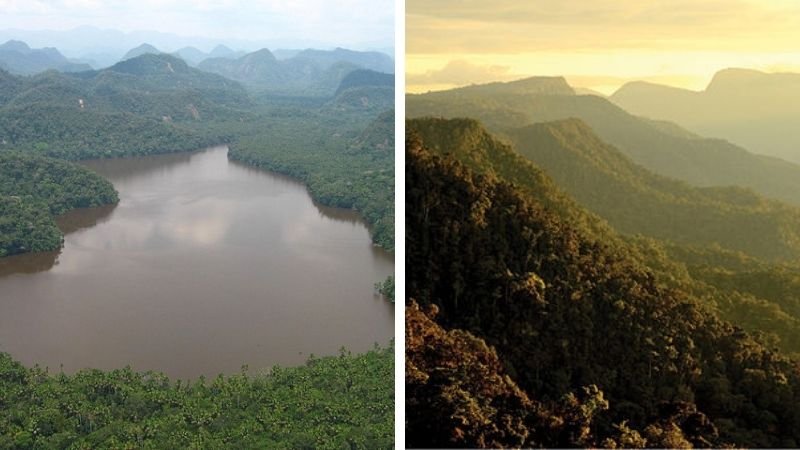
The Cordillera Azul National Park was created on May 21, 2001 and is located in the departments of San Martín, Loreto, Ucayali and Huánuco, Peru; It has 1,353,190.85 ha. and a great biodiversity (International Union for Conservation of Nature, IUCN, 2020).
The objective of creating the Cordillera Azul National Park is the conservation of high-altitude swamps, hill forests, dwarf groves, spongy forests, eroded reddish stone hills, isolated lakes, streams and streams.

Venegas P, Torres-Carvajal O, Duran V, Queiroz K, CC BY 3.0
According to the Center for Conservation, Research and Management of Natural Areas, CIMA (2020), biodiversity refers to the variability that exists between ecosystems, species and in turn within species, the Cordillera Azul being an example of it.
Protected flora species
The park comprises a series of mountains that have given rise to the following large ecosystems (CIMA, 2020):
- Stumpy forests (1,800-2,400 meters above sea level), which have low and dense vegetation (less than 10 m), which are located in steep places such as mountain crests; a high density of terrestrial bromeliads are located in them.
- Cloud forests (1,500-1,800 masl), correspond to low-stature forests (less than 15 m), generally covered by a thin layer of clouds with frequent light drizzle; the ground is covered by a spongy and moist layer, with abundant algae, mosses and lichens.
- Montane cloud forests (1,050-1,500 masl), (between 15 and 20 m.), which cover 70% of the park with very green vegetation and large tree ferns.
- Pre-montane forests (650-1,050 masl), with undulating formations and a greater richness of tree species than the valleys; They have a large number of lianas and shrubs.
- Low jungle forests (255-650 masl), with open vegetation, lianas, thorny plants and aguajes (Mauritia flexuosa).
- High altitude lagoons, some formed by subsidence due to tectonic movements; they are almost inaccessible.
- “Vivian” or Zig-zag formations, large rows of zig-zag triangular plateaus that generate impressive waterfalls.
- Manashawemaná, which is a succession of mountains that are part of the Zig-zag formations and rise up to 1,800 meters above sea level.

Tadd and Debbie Ottman CC BY 2.0
Protected animals
Thus, its forests are home to more than 4,000 species of plants as well as animal species in danger of extinction, such as the spectacled bear (Tremarctos ornatus), the white bagre(Trichomycterus sp),the tree frog (Phyllomedusa chaparroi), the boa constrictor (Boa constrictor), the mountain dogSpeothos venaticus) and other unique species of reptiles, amphibians and birdssuch as the scarlet-breasted barbet (Capito wallacei), among other (CIMA; 2020; UICN, 2020).
Importance of the Cordillera Azul National Park
Indeed, the Cordillera Azul National Park protects global biodiversity, the largest area of high jungle in Peru and the headwaters of 45 basins that supply water to more than 350,000 people who live in adjacent areas (IUCN, 2020).
References
- Centro de Conservación, Investigación y Manejo de Áreas Naturales, CIMA. (2020). Recuperado de https://www.cima.org.pe/es/parque-nacional-cordillera-azul/biodiversidad.
- Unión Internacional para la Conservación de la Naturaleza (UICN). (2020). Cordillera Azul, recuperado de http://www.iucn.org.

Economist (Central University of Venezuela). Full professor and researcher attached to the “Edgar Abreu Olivo” Agrifood Research Center, Universidad de Los Andes. Doctor from the University of La Laguna (Spain). Award “One of the 10 most consulted authors of the Saber ULA university portal” (2005); prize in the III Essay Contest of the Central Bank of Venezuela BCvoz Economico, 2016, with the work “Theobroma cacao: transformation and consumption of the “food of the gods” in Venezuela and the world” (co-authored).
This post is also available in:
![]() Español (Spanish)
Español (Spanish)
